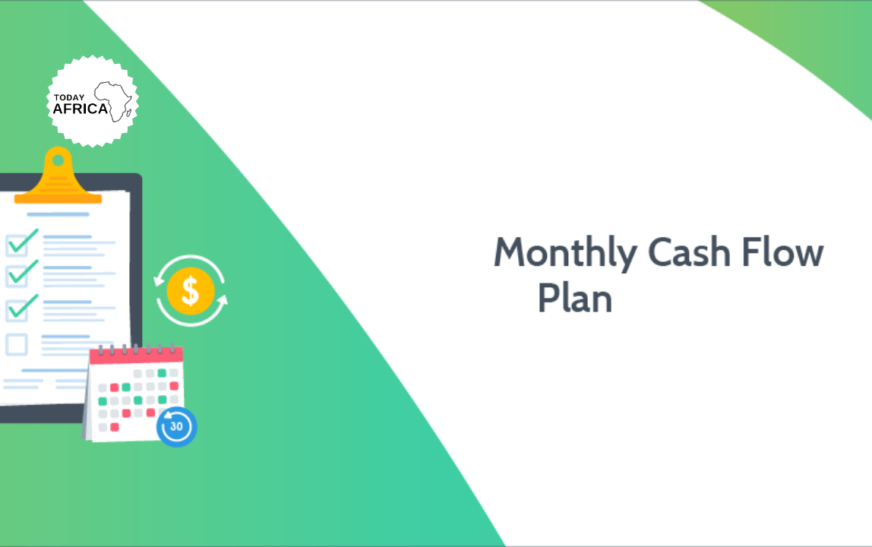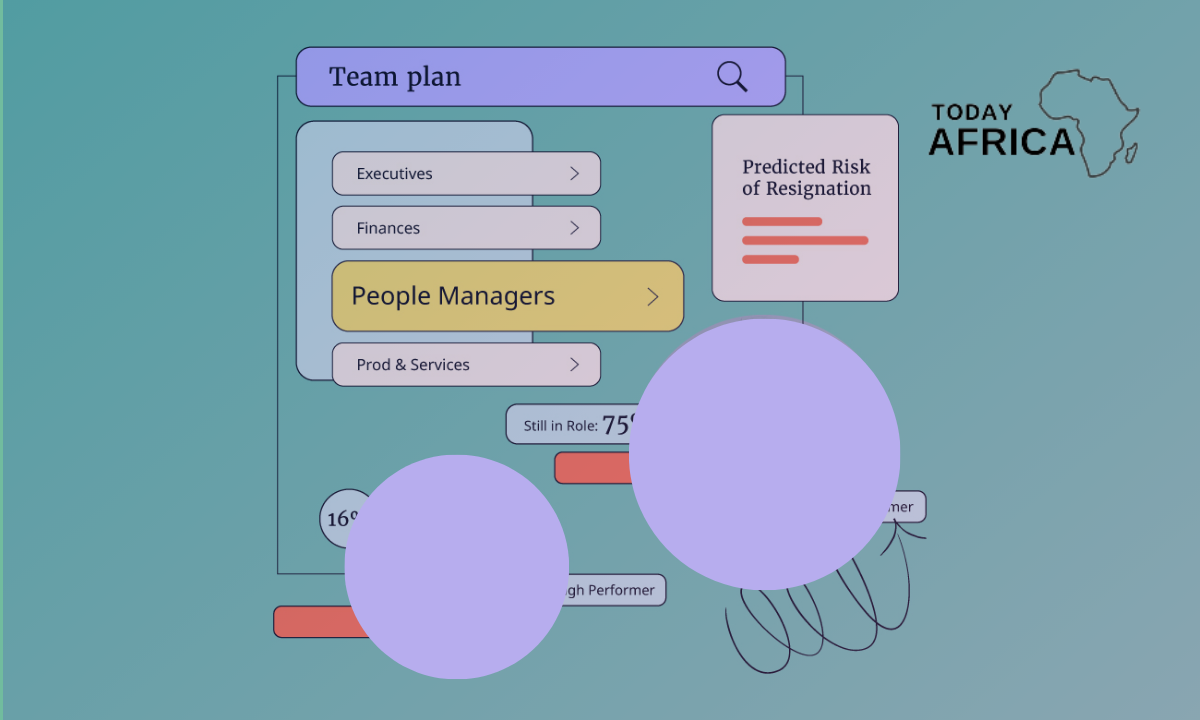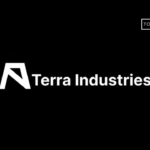Ever feel like you’re constantly chasing your tail when it comes to your business finances? You bring in money, but it seems to disappear just as fast. Here’s the culprit: a lack of a clear understanding of your cash flow.
A monthly cash flow plan is your financial roadmap. It helps you forecast incoming and outgoing cash, identify potential shortfalls, and make informed decisions about your business. In short, it gives you control over your finances.
This blog post will guide you through the process of creating a monthly cash flow plan for your business. We’ll cover everything you need to know, from gathering information to building your plan and monitoring your progress.
Why Do You Need a Monthly Cash Flow Plan?
Here are some key reasons why a monthly cash flow plan is essential for your business:
- Improved financial clarity: A cash flow plan sheds light on your business’s financial health. You’ll see exactly where your money comes from and where it goes. This allows you to identify areas for improvement, like reducing unnecessary expenses or optimizing your billing cycle.
- Enhanced forecasting: With a cash flow plan, you can anticipate future cash flow trends. This foresight helps you prepare for potential shortfalls or capitalize on periods of surplus.
- Informed decision making: Financial decisions are best made with data, not guesswork. A cash flow plan provides the data you need to make confident choices about investments, hiring, inventory levels, and more.
- Reduced stress: Financial uncertainty is a major source of stress for business owners. A well-defined cash flow plan gives you peace of mind by ensuring you have a clear picture of your financial situation.
- Increased access to funding: Lenders and investors are more likely to support businesses with a solid financial plan. A cash flow plan demonstrates your ability to manage finances responsibly, making it easier to secure funding when needed.
What is Cash Flow?
Cash flow refers to the movement of money into and out of your business. It includes all the cash receipts (inflows) and cash payments (outflows) over a specific period. Unlike profit, which is a theoretical measure of your business’s performance, cash flow represents the actual liquidity available to sustain operations, pay bills, and invest in growth.
Types of Cash Flow
- Operating cash flow: Cash generated from your core business operations.
- Investing cash flow: Cash used for or generated from investments, like purchasing equipment or selling assets.
- Financing cash flow: Cash received from or paid to investors and creditors, including loans, repayments, and equity financing.
Importance of a Monthly Cash Flow Plan

A monthly cash flow plan helps you:
- Ensure liquidity: Keep enough cash on hand to meet immediate needs and obligations.
- Plan for the Future: Make informed decisions about investments, expansions, and other strategic moves.
- Avoid cash shortfalls: Identify potential gaps in cash flow and take proactive measures to address them.
- Improve financial management: Gain insights into your spending patterns and areas where you can cut costs or improve efficiency.
- Enhance credibility: Demonstrate to lenders and investors that you have a solid handle on your finances.
Components of a Cash Flow Plan
A comprehensive cash flow plan typically includes:
- Cash inflows: All sources of incoming cash, such as sales revenue, accounts receivable collections, loans, and investments.
- Cash outflows: All outgoing cash payments, including operating expenses, payroll, loan repayments, taxes, and capital expenditures.
- Net cash flow: The difference between cash inflows and outflows over a specific period.
- Opening and closing cash balances: The amount of cash at the beginning and end of the period, reflecting the impact of net cash flow on your cash reserves.
Read Also: What is Debt Financing in Business?
Step-by-Step to Creating a Monthly Cash Flow Plan
Now that you understand the importance of a cash flow plan, let’s dive into how to build one:
1. Gather information
The first step is to gather all the relevant financial information about your business. Here’s what you’ll need:
- Income statements: This financial statement summarizes your business’s revenue and expenses over a period. Review past income statements to understand your historical income trends and expense categories.
- Bank statements: Gather your most recent bank statements to identify all your incoming and outgoing cash flows. You can categorize these transactions to gain insights into your spending habits.
- Accounts receivable aging report: This report details your outstanding customer invoices and how long they’ve been overdue. It helps you estimate when you can expect to receive payments from customers.
- Accounts payable aging report: This report details your outstanding payments to vendors. Use this to predict your future cash outflows for bills.
- Loan schedules: If you have any business loans, gather your loan schedules which detail your monthly loan payments.
2. Choose a template or create your own
There are several options for creating your cash flow plan. Here are some popular choices:
- Spreadsheets: Programs like Microsoft Excel or Google Sheets are versatile and allow for customization. You can create a basic template or find pre-made templates online.
- Accounting software: Many accounting software programs like QuickBooks FreshBooks, Sage 50, Xero, Zoho Books, etc offer built-in cash flow planning features. This can be a good option if you already use accounting software and want a more integrated solution.
- Online cash flow planning tools: Several online tools like PlanGuru, Float, Scoro, QuickBooks, Pulse, Cash Analytics, Google Docs, etc specialize in cash flow planning. These tools can be user-friendly and offer additional features like scenario planning.
3. Structure your cash flow plan
Here’s a breakdown of the typical structure for a monthly cash flow plan:
- Beginning cash balance: This is the amount of cash you have readily available at the beginning of the month. You can find this number on your bank statement.
- Cash inflows: List all sources of incoming cash for the month. This includes sales revenue, customer payments on outstanding invoices, interest earned on investments, and any other income streams.
- Cash outflows: List all your expected expenses for the month. Common categories include salaries, rent, utilities, marketing, supplies, inventory purchases, loan payments, and taxes.
- Ending cash balance: Subtract your total cash outflows from your total cash inflows and the beginning cash balance. This number represents the projected amount of cash you’ll have on hand at the end of the month.
4. Populate your cash flow plan
Once you’ve chosen your template and structured your cash flow plan, it’s time to fill in the numbers. Let’s break down how to populate each section:
- Beginning cash balance: Find the previous month’s ending cash balance on your bank statement or previous cash flow plan.
- Cash inflows:
- Sales revenue: Forecast your expected sales for the month based on historical sales data, seasonal trends, and any marketing initiatives planned.
- Customer payments on outstanding invoices: Use your accounts receivable aging report to estimate how much you’ll collect from outstanding customer invoices during the month.
- Other income streams: Include any other sources of income your business may have, such as interest earned on investments or rental income from a property you own.
- Cash outflows:
- Fixed expenses: These are expenses that remain relatively constant each month, such as rent, utilities, loan payments, and insurance. The amount can be found in your budget or contracts.
- Variable expenses: These expenses fluctuate based on your business activity. Examples include inventory purchases, marketing costs, and commissions. Use historical data and planned activities to forecast these expenses.

Tips for estimating cash flows:
- Use historical data: Review past income statements and bank statements to understand historical trends in your cash flows.
- Factor in seasonality: If your business is seasonal, adjust your forecasts to account for expected fluctuations in income and expenses.
- Consider upcoming events: Are there any planned marketing campaigns, equipment purchases, or tax payments that will impact your cash flow?
- Be conservative: It’s better to underestimate your income and overestimate your expenses to avoid unexpected shortfalls.
5. Monitor and update your cash flow plan regularly
Your cash flow plan is a living document, not a set-in-stone forecast. Throughout the month, monitor your actual cash inflows and outflows compared to your projections. Here’s how to stay on track:
Read Also: 16 Best Ways to Grow Your Small Business This Year
- Track your income daily: Maintain a record of all your daily sales and customer payments.
- Reconcile your bank statements: Regularly reconcile your bank statements to ensure your cash flow plan reflects your actual account activity.
- Update your cash flow plan weekly or bi-weekly: As you gather actual data, update your cash flow plan to reflect the latest trends. This helps you identify any potential shortfalls or surpluses early on.
6. Taking action based on your cash flow plan
Your cash flow plan is a powerful tool for making informed financial decisions for your business. Here are some ways to leverage your plan:
- Identify areas to cut costs: If your cash flow plan indicates potential shortfalls, you can analyze your expenses to identify areas for reduction.
- Manage inventory levels: Optimize your inventory levels to avoid overstocking and tying up cash unnecessarily.
- Plan for financing needs: If your cash flow plan forecasts a shortfall, you can explore financing options like a line of credit to bridge the gap.
- Negotiate payment terms: Negotiate longer payment terms with vendors to free up cash flow in the short term.
- Prioritize investments: Use your cash flow plan to determine when strategic investments are financially viable for your business.
Conclusion
Creating and maintaining a monthly cash flow plan is an essential practice for any business. By dedicating time to develop and utilize this tool, you gain control over your finances, make informed decisions, and ultimately achieve your business goals. Remember, a well-managed cash flow is the lifeblood of a healthy and thriving business.
Frequently Asked Questions
What are reasons cash flow plans sometimes do not work?
The cash flow plans may not work due to inaccurate projections, unforeseen events, poor cash management, and a lack of flexibility. It is important to regularly review and adjust cash flow plans to ensure they remain effective in managing cash flow.
The reasons why cash flow plans sometimes do not work can vary depending on the specific circumstances. Here are a few common reasons: Inaccurate projections: Cash flow plans rely on accurate forecasts of future income and expenses. If these projections are not realistic or based on faulty assumptions, the plan may not align with the actual cash flow situation.
Unforeseen events: Unexpected events, such as economic downturns, natural disasters, or changes in market conditions, can disrupt cash flow plans. These unforeseen events can lead to lower revenues or higher expenses, making the plan ineffective.
Poor cash management: Effective cash flow planning requires proper management of cash inflows and outflows. If a company fails to effectively manage its cash, such as delaying collections or overspending, the cash flow plan may not work as intended.
Lack of flexibility: Cash flow plans should be flexible enough to adapt to changing circumstances. If a plan is too rigid and does not allow for adjustments or contingencies, it may not be able to handle unexpected changes in cash flow.
















